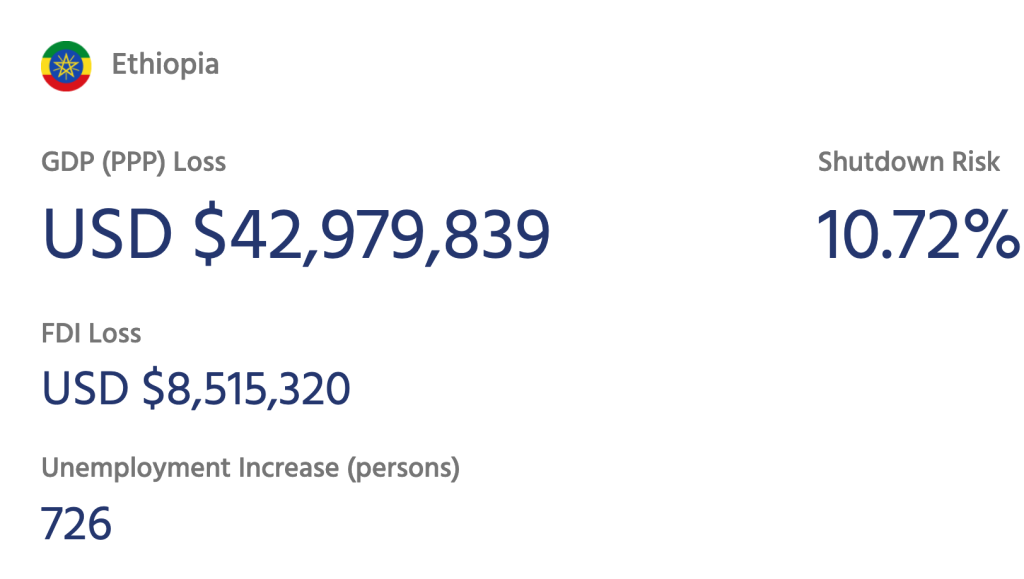Earlier this week, a tweet caught our attention noting that Pulse partner, Open Observatory of Network Interference (OONI), was showing social media platforms in Ethiopia were now accessible without using a Virtual Private Network (VPN), bringing to an end a 158-day service blocking order by local authorities.
As per the Pulse Shutdown Tracker, local authorities started ordering local Internet Service Providers to block access to social media platforms, including Telegram, Facebook, and TikTok, on 9 February 2023, following tensions between the Ethiopian Orthodox Tewahdo Church and the government. While tensions relaxed shortly after, these bans have remained in place until this month.
Last month, VOA news reported how the social media bans were making it hard for communications businesses and civil rights groups to reach audiences or verify information.
According to the Pulse Netloss Calculator (Figure 1), the most recent shutdown resulted in nearly USD $43M in lost Gross Domestic Product (GDP), USD $4.5M in lost Foreign Direct Investment (FDI), and an estimated 726 job losses.

While an estimated 30 million Internet users used a Virtual Private Network (VPN) to circumvent the block, citizens without the means to do so were unable to access these sites. Internet shutdowns during protests or civil unrest impact the ability of citizens to get accurate information from the government or other trusted sources when they need it most. It also becomes harder for citizens to contact family members and friends in other parts of the country or other countries.
Ethiopia’s government has a history of using Internet shutdowns to ‘quell’ situations. The government has resorted to total national blackouts, rendering the vast majority of the country’s 120 million citizens offline for days at a time, as well as localized shutdowns, including the longest-running shutdown recorded by Pulse that is still impacting the Tigray region, 987 days since it was imposed.
Report: Tracking Internet Shutdowns in 2023
No End in Sight for Ongoing Service-Blocking Shutdowns in Myanmar, Russia, and Iran
Since 2019, Pulse has recorded 68 service-based shutdown incidents affecting 29 countries. During this time, Ethiopian authorities have imposed the seventh and ninth-longest service-blocking shutdown orders, as shown in the figure below.
Mouse over the bubbles to show the length of each service-block shutdown event. The size of the bubbles indicates the proportional length of time of the events compared to one another.
Myanmar has suffered through the biggest service-blocking shutdown event we’ve measured thus far, one which is still ongoing since its 2 February 2021 start. Other ongoing service-blocking shutdowns that currently rank second and fourth longest are those being carried out by authorities in the Russian Federation (ongoing since 28 February 2022) and the Islamic Republic of Iran (ongoing since 20 September 2022). If the latter orders continue into September, it will surpass the third longest, 367-day service-blocking shutdown imposed by the Türkiye government between October 2019 and October 2020.
All content-blocking techniques have serious deficiencies, especially in the context of blocking based on public policy considerations. All techniques behave poorly and can be evaded. For this reason, and the reasons stated before, we advise against content blocking.
Photo by Florian Schmetz on Unsplash


